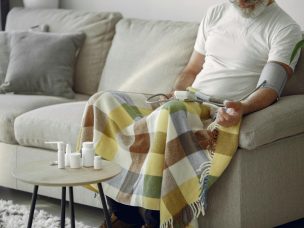Exercise training and diet therapy improved physical fitness and salivary testosterone levels in an interventional study of people living with HIV/AIDS.
Acquired immune deficiency syndrome (AIDS) is caused by the human immunodeficiency virus (HIV). Exercise and nutrition constitute important components of treatment protocols and rehabilitation care for people living with HIV/AIDS (PLWHA). However, no thorough research is available on the combined effects of the two interventions in PLWHA.
An interventional study published in BMC Public Health evaluated the effects of exercise training and diet therapy on physical fitness, quality of life, and immune response in PLWHA.
Patient Characteristics
A total of 28 male PLWHA were randomized to the intervention group (n = 14) and the control group (n = 14). The mean age was 50.8 and 51.1 years in the intervention and control groups, respectively. None of the participants were married.
Exercise and Diet Significantly Improved Physical Fitness
Participants in the intervention group underwent a 4-week combination of dietary supplementation and moderate-intensity exercise. Significant differences were observed in the reaction speed, grip strength, and physical efficiency index (PEI) of participants in the intervention group after the training period. Reaction speed (p = 0.001), grip strength (left: p = 0.002, right: p = 0.03), and PEI (p = 0.023) significantly improved in the intervention group after training.
Significant Increase in Salivary Testosterone Levels Observed After Training
Significant differences were observed in the salivary testosterone levels after the training period in the intervention group. Compared to pre-training levels, salivary testosterone levels demonstrated a significant increase after the intervention (p = 0.012). However, there were no significant differences in salivary cortisol, salivary testosterone to salivary cortisol ratio, or secretory immunoglobulin A levels between the control and intervention groups.
Intervention Improved Physical and Emotional Wellbeing
Among the sub-factors of quality of life, perceived physical satisfaction significantly improved after the training period in the intervention group (p = 0.001). Confidence in physical self-efficacy significantly improved after the intervention (p = 0.045). There was a significant increase in burnout in the intervention group after training (p = 0.043). A significant increase in emotional eating was observed after training in the intervention group (p = 0.001); this value was significantly higher (p = 0.013) compared to the post-training value in the control group. However, there were no significant between-group differences in restrained and external eating after training. Regarding exercise motivation, the perceived external display significantly decreased (p = 0.008), while fulfillment significantly improved (p = 0.047) after training in the intervention group.
Source:
Qin, X., Allan, R., Park, J., Kim, S. H., & Joo, C. (2024). Impact of exercise training and diet therapy on the physical fitness, quality of life, and immune response of people living with HIV/AIDS: a randomized controlled trial. BMC Public Health, 24(1). https://doi.org/10.1186/s12889-024-17700-0










